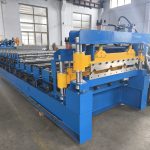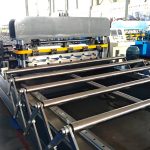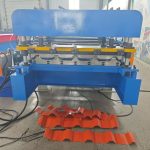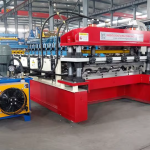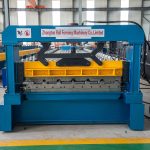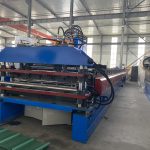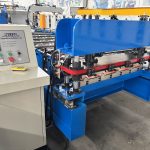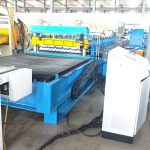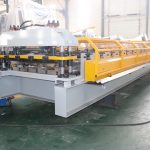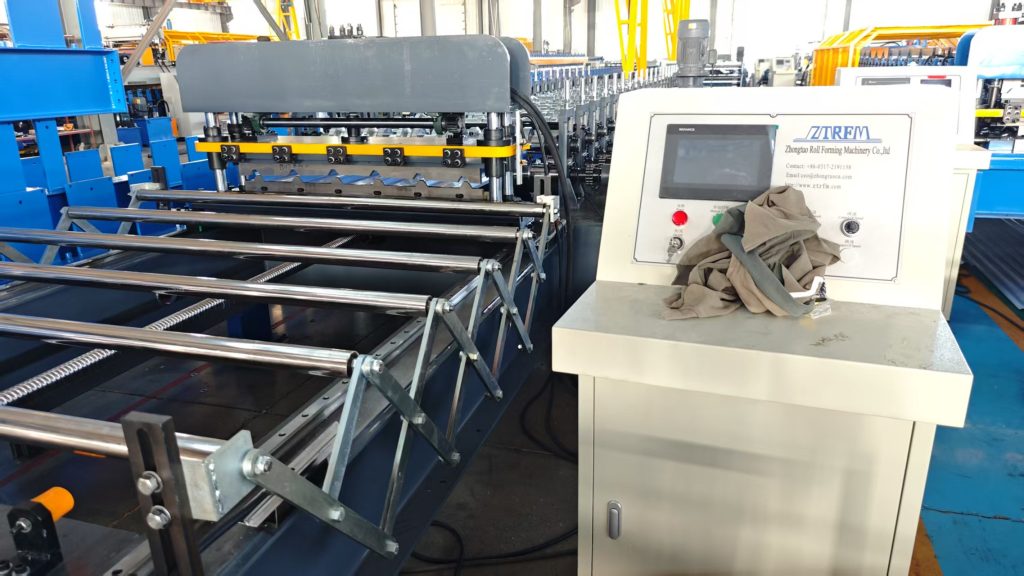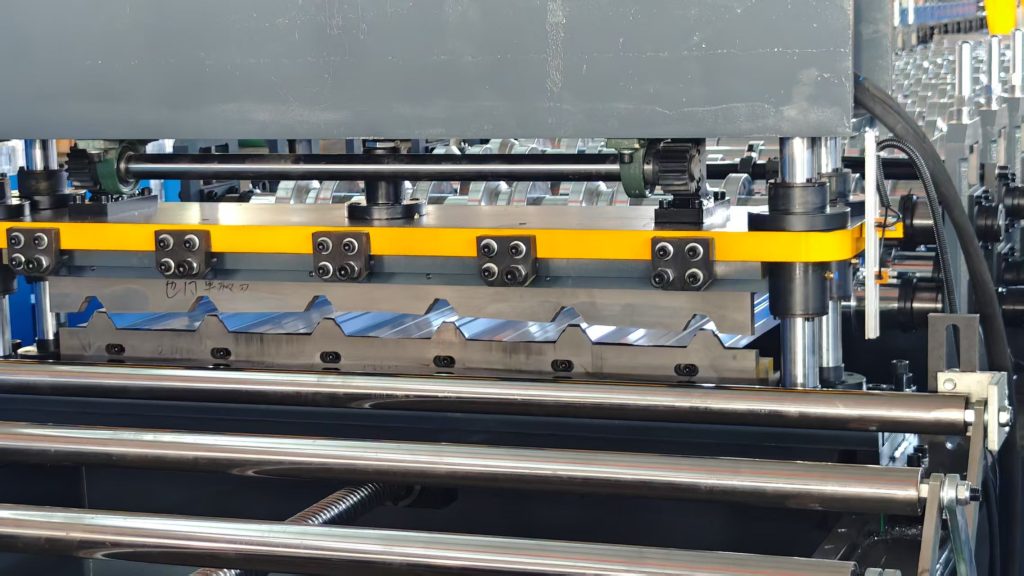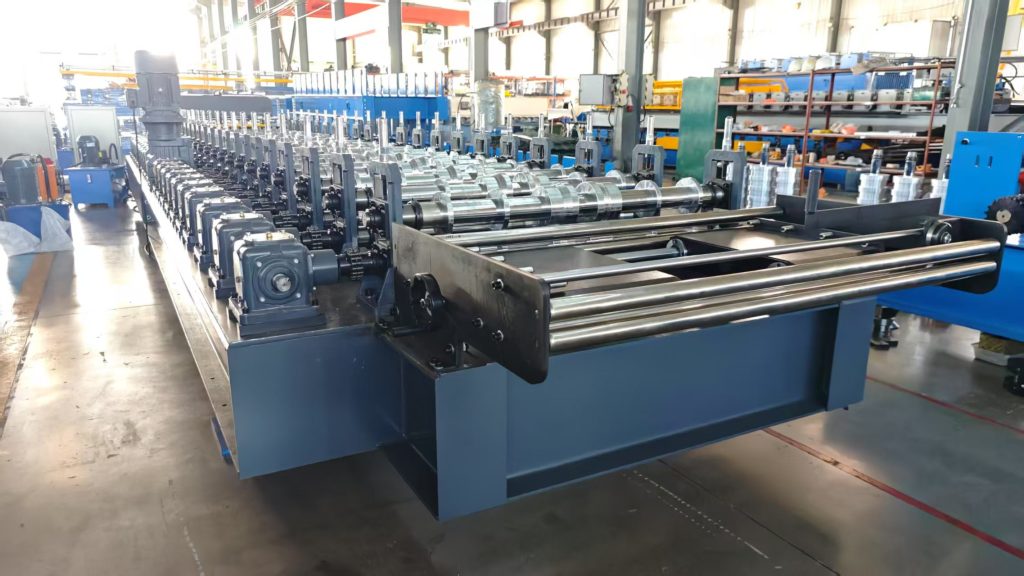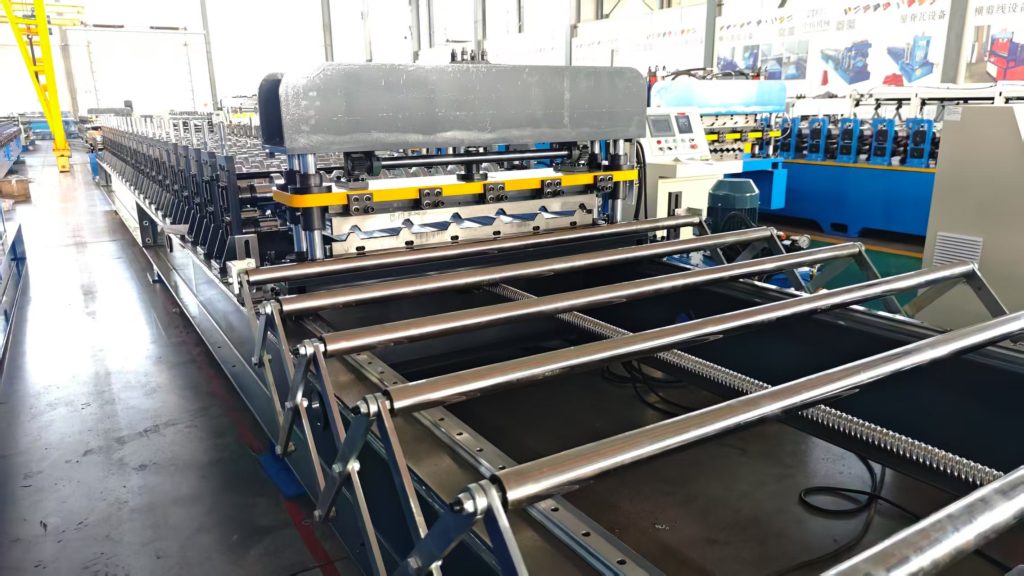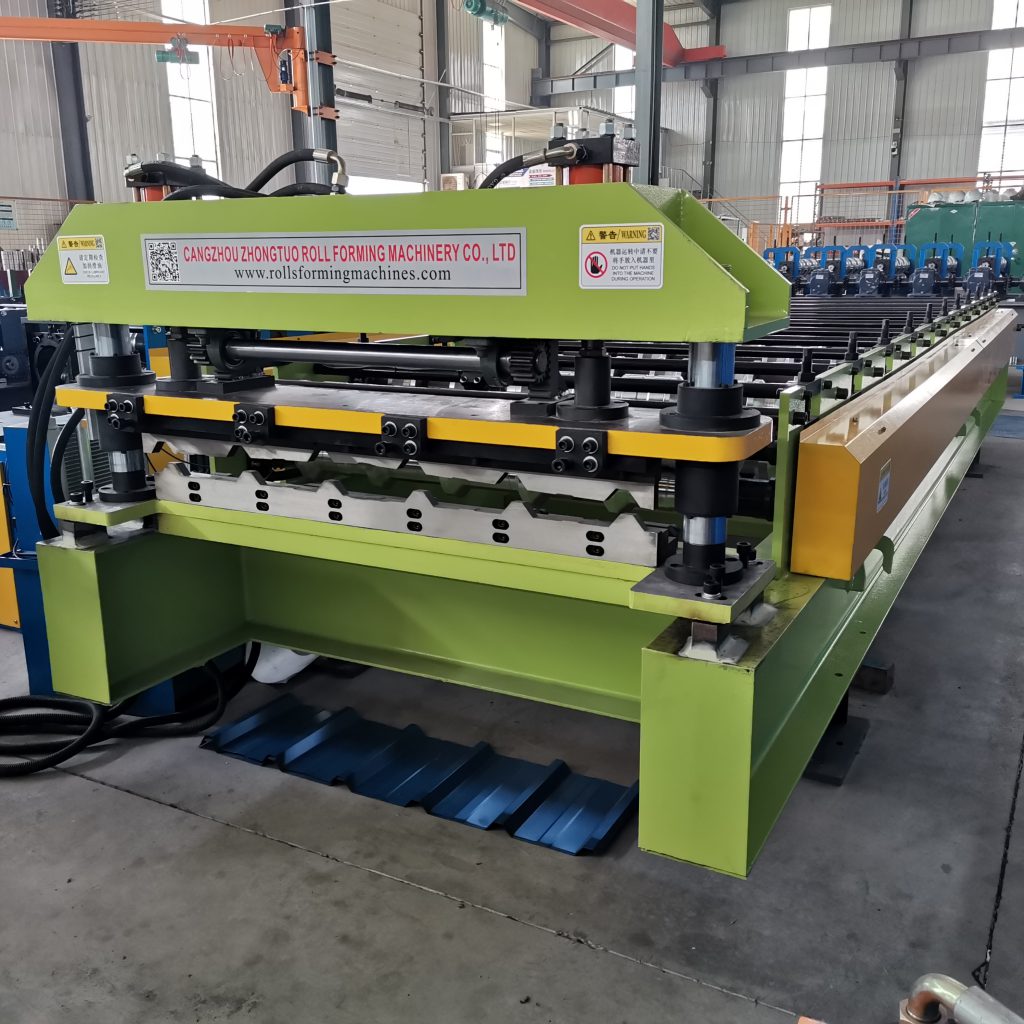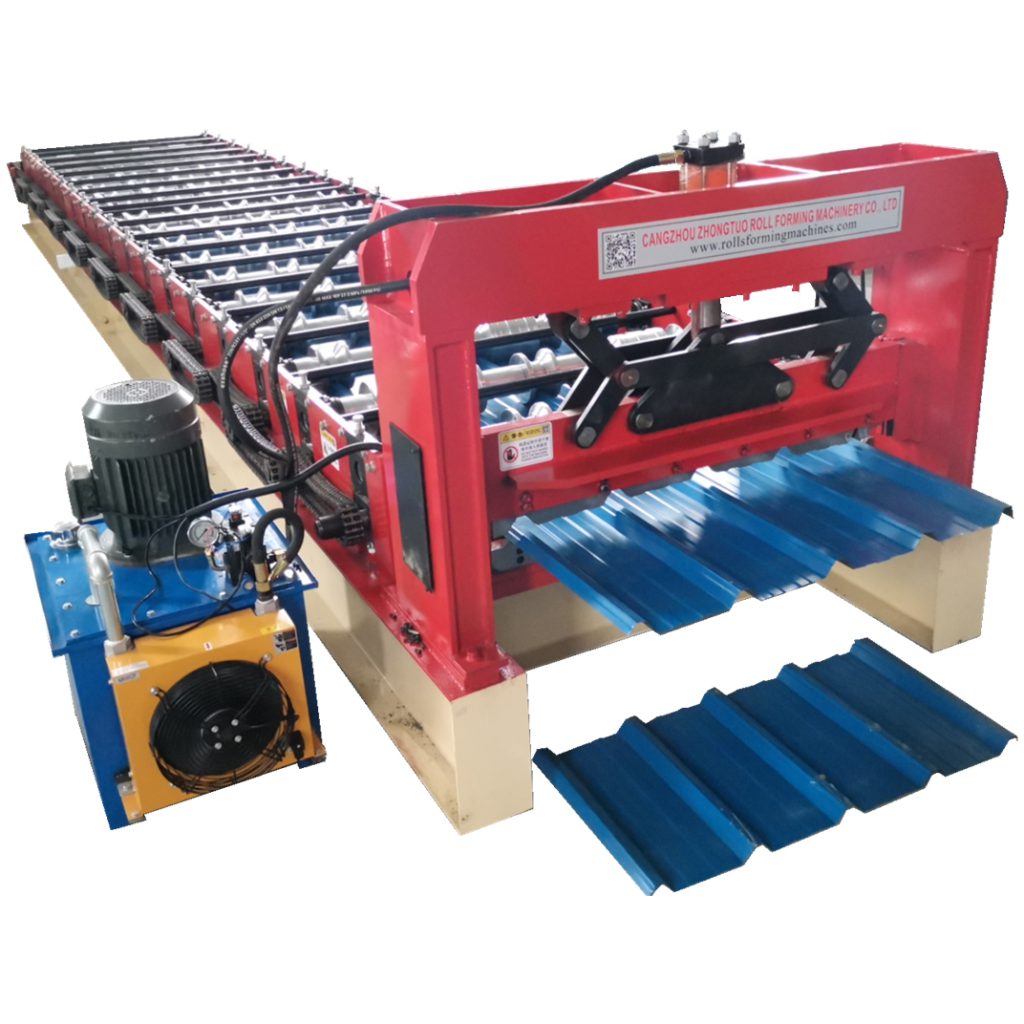https://www.youtube.com/watch?v=_fuM20pmruI
What is a Trapezoidal Sheet Roll Forming Machine?
A trapezoidal sheet roll forming machine is a specialized piece of manufacturing equipment engineered to convert flat sheet metal into trapezoidal panels. These panels feature a distinct cross-sectional structure—resembling a series of connected trapezoids—with parallel upper and lower edges and inclined sidewalls, which is their defining characteristic.
The machine operates by passing flat metal stock through a sequence of precision-engineered roller dies. At each roller station, the material undergoes incremental bending, gradually taking on the trapezoidal profile’s ridges and troughs. Modern trapezoidal roll formers are fully automated systems, and high-performance variants can achieve production speeds in excess of 130 feet per minute.
Key Components of a Trapezoidal Sheet Roll Former
A trapezoidal sheet roll forming machine is composed of multiple core components that work in coordination to produce trapezoidal panels, each serving a specific functional purpose:
– Uncoiler: This component is responsible for holding large coils of flat sheet metal and feeding the material into the initial roller station to start the forming process. It must maintain steady, uniform tension on the metal to avoid misfeeding or deformation.
– Roller dies: These are steel rollers with precisely machined contours. As the sheet metal passes through each pair of top and bottom roller dies, the contours gradually bend the material into the trapezoidal shape. The rollers are precision-ground to account for the metal’s thickness and springback (the natural tendency of metal to rebound slightly after bending).
– Forming stations: Typically, a trapezoidal roll former is equipped with 12 to 16 forming stations, each fitted with a set of roller dies. Each station applies a controlled amount of rolling force to incrementally shape the metal—early stations create gentle, gradual bends, while later stations refine and lock in the final trapezoidal profile.
– Drive system: This system powers the rotation of the forming rollers and ensures the speed and position of each station are precisely synchronized. Programmable servo motors are widely used in drive systems for their accuracy and flexibility.
– Support rollers: These are additional rollers that do not actively participate in shaping the metal. Instead, they provide support and stability between forming stations, preventing the material from sagging or shifting during the forming process.
– Shear station: Once the sheet metal has been fully formed into the trapezoidal profile, the shear station uses a flying shear to cut the panel to the length specified by the operator. Precise cutting is critical to avoid issues like snagging during panel installation.
– Controller: This is the machine’s automation core, allowing operators to set production parameters (such as panel length and speed) and store “recipes” for different trapezoidal panel configurations. It coordinates all machine movements and provides real-time data on production status.
Main parameters of the machine
|
1.Formed Material
|
PPGI,GI,AI
|
Thickness:0.3-1.0mm Width:1000mm/1250mm(customized)
|
||
|
2.Decoiler
|
Hydraulic automatic decoiler
|
Manual decoiler(will give you as free)
|
||
|
3.Main body
|
Roller station
|
22-27rows(As your requirement)
|
||
|
Diameter of shaft
|
80mm solid shaft
|
|||
|
Material of rollers
|
45# steel, hard chrome plated on the surface
|
|||
|
Machine body frame
|
400 H steel
|
|||
|
Drive
|
Gearbox transmission
|
|||
|
Dimension(L*W*H)
|
15000*1800*1600(customize)
|
|||
|
Weight
|
18T
|
|||
|
4.Cutter
|
Automatic
|
cr12mov material, no scratches, no deformation
|
||
|
5.Power
|
Motor Power
|
7.5KW*2 sets,Siemens brand
|
||
|
Hydraulic system power
|
7.5KW
|
|||
|
6.Voltage
|
380V 50Hz 3Phase
|
As your requirement
|
||
|
7.Control system
|
Electric Box
|
Customized(famous brand)
|
||
|
Language
|
English(Support multiple languages)
|
|||
|
PLC
|
Automatic production of the whole machine. Can set batch, length, quantity, etc.
|
|||
|
8.Forming Speed
|
30-35m/min
|
The speed depends on the shape of the tile and the thickness of the material.
|
||
IBR Roll Former Capacity and Speeds
IBR sheet roll formers are available in three main capacity grades, each tailored to different production requirements:
1. Light-duty: These are compact machines designed for small-scale operations, such as job shops or low-volume production runs. They can handle sheet metal with a thickness of 0.4mm to 1.5mm and have a maximum production speed of approximately 40 feet per minute.
2. Mid-duty: These models offer higher power and faster production compared to light-duty machines, with maximum speeds ranging from 90 to 100 feet per minute. They are capable of processing sheet metal with a thickness of 0.7mm to 2.0mm, making them suitable for medium-volume production.
3. High-capacity: Built for large-scale manufacturers (e.g., those producing roofing or cladding panels in bulk), these heavy-duty machines can reach speeds over 130 feet per minute and handle sheet metal up to 3.0mm thick. They also include features like rapid acceleration, quick die changeovers, and automatic coil reloading to minimize production downtime.
Key Benefits of Using a Sheet Roll Former
Using a dedicated trapezoidal sheet roll forming machine offers several significant advantages for manufacturers:
– Efficient profile forming: The precision of the roller dies and the sequential design of the forming stations ensure that the trapezoidal profile is formed smoothly and continuously along the entire length of the panel.
– Flexibility: The machines can adapt to a range of material thicknesses and widths, and operators can quickly adjust settings to produce different trapezoidal profile sizes (e.g., varying ridge height or base width).
– Consistent output: Automated operation ensures that every panel meets the same strict tolerance standards, with no variation or deformation even during extended production runs.
– High production speed: Modern high-capacity trapezoidal roll formers can produce over 130 feet of panel per minute, enabling manufacturers to meet large-volume orders efficiently.
– Superior surface finish: The roller dies only contact the outer 5% of the metal strip, which minimizes friction and ensures the final trapezoidal panel has a smooth, unblemished surface.
– Low maintenance: Advanced bearing designs in the machine reduce wear on key components, lowering the frequency of maintenance and minimizing downtime.
For manufacturers seeking to produce high-quality trapezoidal roofing or cladding panels efficiently, a dedicated trapezoidal sheet roll forming machine is a highly suitable fabrication solution.


